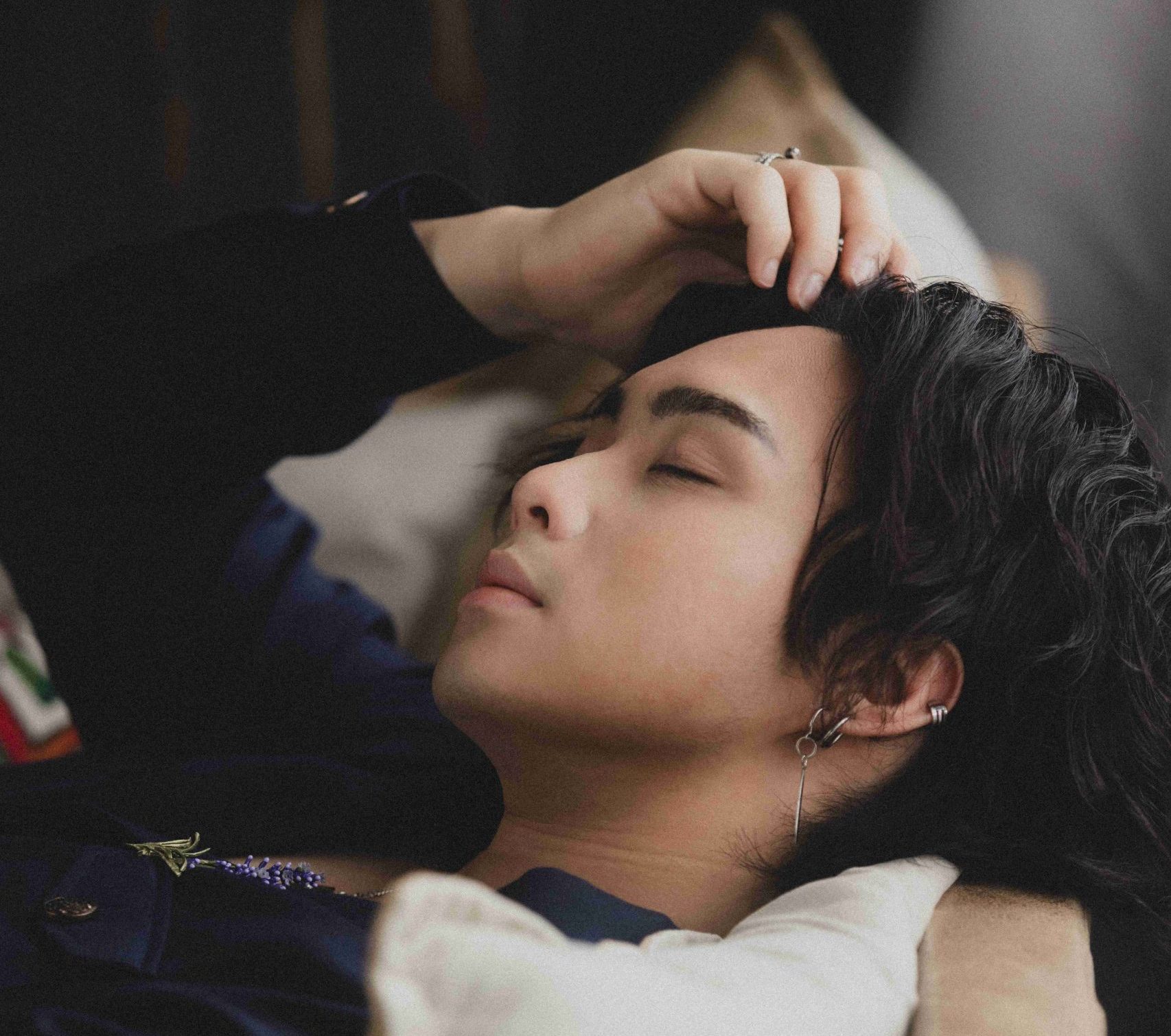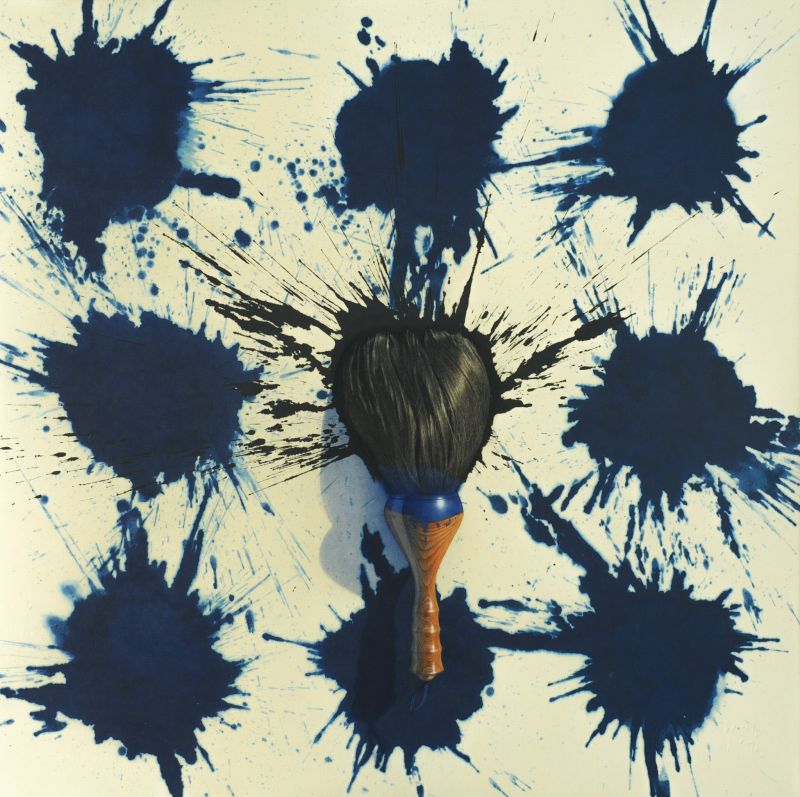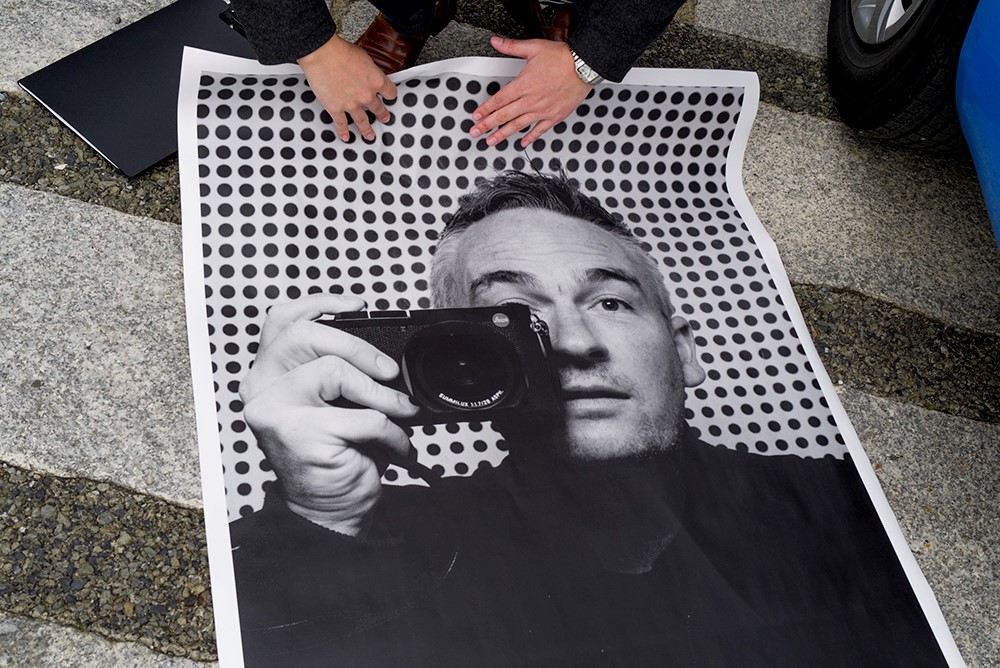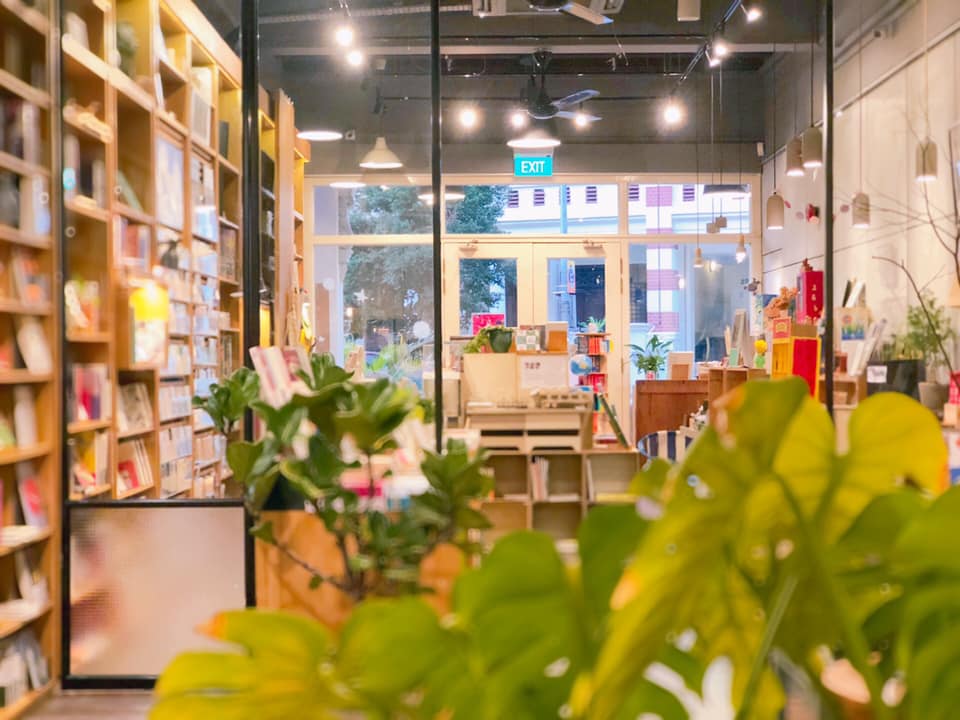When news first broke of a new multi-concept space offering art, music, food, and drinks, our interest was piqued. One-off cocktails and desserts inspired by the exhibitions, which would rotate in tandem every month? Music parties featuring emerging musicians and underground sounds? And to top it all off, a community aspect tying the whole place together? Telok Ayer Arts Club sounded too good to be true; a little too ambitious for its own shoes.
We aren’t their first detractors. Co-curator Anmari Van Nieuwenhove admitted that the journey, which took all of a few months, had its bumps in the road. “When we were working on it, a lot of people said ‘Multi-use venues don’t work—you’re either a gallery, or you’re a restaurant, or you’re a bar; three together won’t work.’”
But step inside the cozy space on McCallum Street—formerly SPRMRKT of the same parent company—and your skepticism fades. The decor is minimal but contemporary, and at first glance looks like any upmarket restaurant on the stretch; it’s probably only after you order a drink from the snazzy bar that you notice the little artworks on the walls. Nothing is in your face (for now), perhaps intentionally.
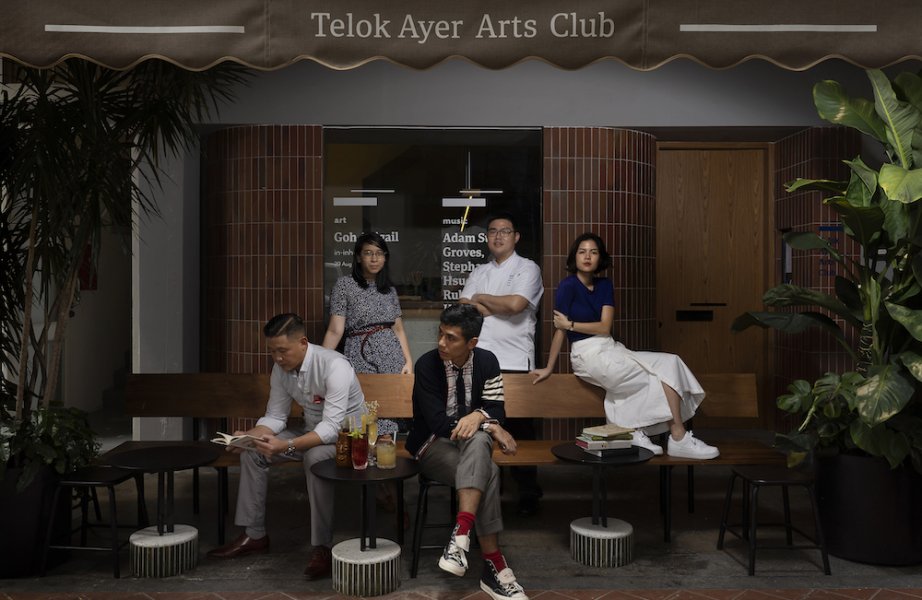
Behind the thoughtful programming, the core team comprises curators Nieuwenhove and Kamiliah Bahdar, music director Hasnor Sidik, head chef Bertram Leong, and bar manager Din Hassan. Together, the five (working under the watchful eye of The Supermarket Company founder Sue-Shan Quek) make up your modern-day Breakfast Club, or Fab Five if you will; an A-team committed to reshaping the idea of an arts club in a time where anything goes.
Given that it is first and foremost an arts club, much of what is created in the space leads back to the art direction. The curators research and approach multi-disciplinary artists who might make a good fit for the space, after which the F&B take their cue. Their first show in-inhabitations, which wraps in a week, spotlights multi-disciplinary sound artist Abigail Goh. Tasked with responding to the space throughout its entire construction period, Goh created a series of paintings as well a mixed materials structure that emits sounds imitating the construction work she was treated to over the months.
For the corresponding menus, Leong created a deconstructed Frozen Lemon Dome dessert, with crumbles and meringue on the side as a nod to Goh’s penchant for using discarded materials in her work. At the bar, Hassan put together the Sweet Melody cocktail—a gingery, gin-based drink wrapped in aluminium foil to showcase Goh’s recycling habit, as well as the structure of past designs. The drink itself isn’t yellow like her paintings, but a light red color—his cheeky interpretation of her aura in a cocktail. Both offerings will only last the duration of the exhibition.
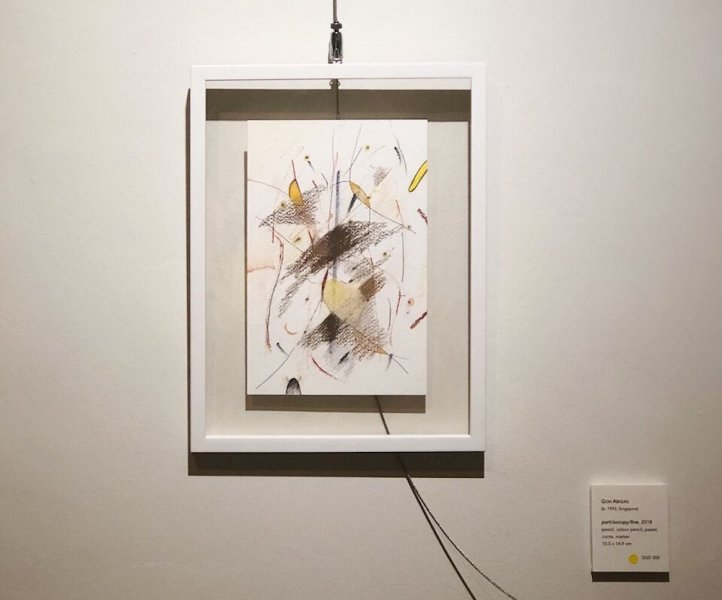
part – occupy – line by Abigail Goh
Like Queer Eye‘s own Fab Five, the team here has its own makeover to do—with the Telok Ayer community, and eventually the general public. With changing tastes and establishments in the area, Nieuwenhove shared that the Telok Ayer crowd specifically are the hardest to figure out, thanks to the plethora of options available to them. “Everything is here. They’re one of the more competitive (areas) in terms of F&B, and it’s so fast-paced; they change their mind just like that,” she said.
Hence the need for a space that has more than just one offering, to “add something different”.
The concept for now is still very fresh—and runs the risk of becoming gimmicky. But Nieuwenhove reassured that curating across four practices is more a collaborative effort than simply responding to one, namely the art. “Over here there’s a belief that all of us are quite multi-disciplinary as well; we all try to do a bit of everything,” she said.
“Through this team here I’ve learnt more about the kitchen, I’ve learnt more about the bar; all of it is an art in itself. I know it sounds a bit cheesy but that’s kind of the thinking behind it. Everyone has their own interpretation behind it and those are all valid interpretations.”
Chiming in, Sidik added: “We want to challenge the idea of an arts club—What is an arts club? People think it’s just paintings on the walls, where artists come and show their paintings; but actually truly it’s not. It’s everything. If you really understand the true meaning of what is an arts club, it’s everything—food, music, people.”
Spoken like a true community center spokesman. We sat down with the four pillars to have a multi-pronged conversation ourselves.
How did the idea for this four-pronged curation come about?
AVN: I think it’s a natural evolution from the Supermarket brand, which has always kind of done multi-concept spaces. It’s called ‘supermarket’ because it’s meant to be an offering of many things; a new, kind of alternative offering of all of these things. But it’s always been about offering more than just food, and redefining ideas of what we need for inspiration, even in the food and the drinks. It’s quite a natural relationship; it’s just that we’re quite explicit (now) about being multi-concept about it. I think more places should be like that.
How do you create the menus inspired by the exhibitions?
AVN: Usually it kind of starts with the art, because art isn’t always present in the space. Conceptually it’s quite hard to link it always, but they take visual cues from the artworks.
BL: There are no rules—we just look through the artist’s artwork, talk a bit to them as well, to get a deeper insight into his/her work; and then from there we build up slowly. If they like colors, then that will be our direction. For Abigail, she had a lot of yellows involved, and a lot of dome shapes. We just try to in a way link the food to the art—which is a challenge, but it’s a fun challenge.
DH: Bert is right—there are no rules; but it’s true that we need to understand the artist, from before and during her show, what she likes and dislikes. For (the next artist Ashidiq Ghazali), the way he does art has more like a HDB, or Lego concept. So on my side I already know that for Lego the only garnish for customers to eat is kueh lapis. Then I think, okay Ash used to drink where I work; I know he likes vodka or something strong like whiskey, or an Old Fashioned style. So I know how I want to design the drink.
AVN: Ash does these paintings that are very boxy, gritty; a bit of Mondrian-ish. He’s playing with colors and grids, so i think that’s where Din got the inspiration.
It’s a new challenge for all of us to make ties between these three things. I think Bert took from (Abigail) color-wise and also structurally. There was one of her works where she uses the dome shape quite a lot, because she works with sound and speakers; and the materials she chooses to use—she always uses discarded and unwanted materials, so there’s that. But there might be projects when we work with artists in the future that might not be so straightforward, where they have artworks on the walls, or a performance.
How do you keep the art-inspired menus from becoming forced or gimmicky?
BL: What I’ve learned in my early days as a trainee, is I try not to go too far—don’t do things I’m not confident in and I don’t know; try to do things I’m confident I’m able to work. It’s just about how I’m able to use that idea and bring it up to the next level.
We work with a lot of ingredients—so there are a lot of neutral-base ingredients that aesthetically are very nice, but have no effect on the entire dish or the flavor profile. It’s very important to me that when the food is presented to the guests it looks nice, but it’s also on point in terms of the taste as well. I just try not to constrain myself where I have to follow the artist so much that I have to change every single thing. You have to keep in mind that at the end of the day they’re still paying customers; and that the food sells.
DH: We’re one of the few restaurant-bars that do Southeast Asian classics; the next series might be Southeast Asian-flavored drinks.
AVN: Any response to something might end up looking gimmicky; if you just take reference from it like visual cues. So it’s not so much in response to, but in collaboration with (the artist), where they still retain their signature style. Each of them are kind of masters in their own right of their own tools.
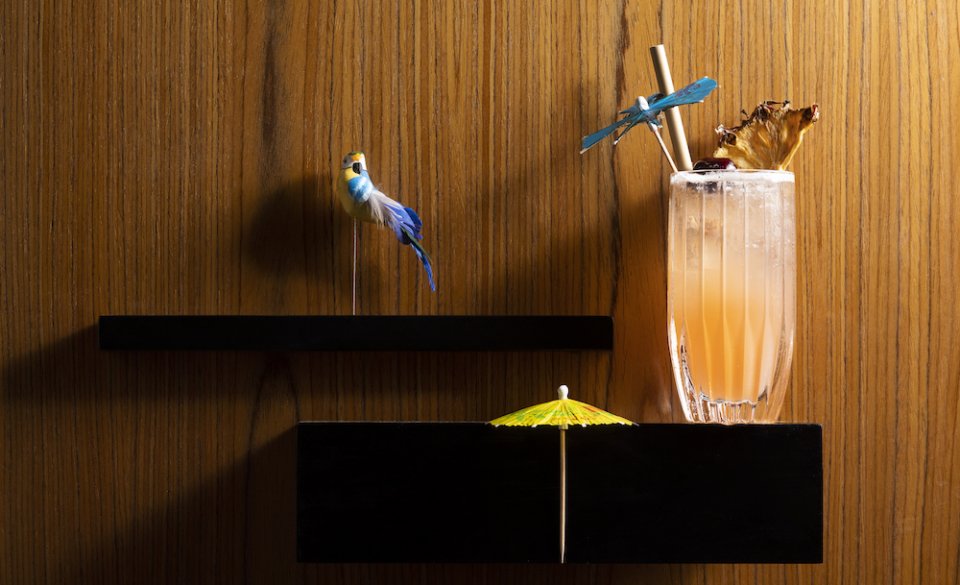
Jungle Bird, a Southeast Asian classic cocktail
And where does music fit into all of this?
HS: The music here is ever-changing, ever-evolving. When it comes to the artist, I’m open to actually understanding what the art is all about—same formula where you try to understand the art, talk to the artist, the kind of music that inspires her with her art as well. If it’s necessary (for the exhibition)—for example, (upcoming artist) Dawn Ng has this whole social experiment that she wants to do, and she has an idea that she wants to play a certain kind of music—that’s where I come in to consult, help her curate; so that the whole atmosphere sounds right in general.
We also have Kelab Malam party nights, and it only happens in between art shows, to break up the art so it’s not just art and art and art. The idea of a Kelab Malam is not like a party party; it’s more like a modern speakeasy where it’s a bit more social and a bit more drinking and makan-ing. It’s also like a new vision we have for this center—how we want to party. So it’s about understanding the space and what kind of sound we can bring in.
Does this kind of programming alienate or attract a very specific crowd?
AVN: We try to be very mindful of that. If our main audience is the Telok Ayer man or woman walking by, we’re trying to keep it open. That’s why we have food and drink, and all of these entry points to something that can be quite esoteric and alienating.
I think we started with quite a conceptual artist, but moving down the road we have all kinds. We ask people to respond to the space—ok it’s in Telok Ayer, it’s a bar; so what can they work with? It’s really about responding to Telok Ayer and we do that because we’re trying to reach out to the Telok Ayer people; we’re not just trying to reach out to the art crowd. Because we’re not there; we’re not in an art area.
HS: The target audience is Telok Ayer first, day to day. How the arts club came about was also because (from the ‘60s to 2013) there was a Telok Ayer performing arts centre just at the corner of Telok Ayer Street; and obviously they tore it down and built it into Fraser Street, which is a commercial building. So in a way we’re trying to give back to the community in terms of what we’ve lost and what we can bring back to this area, keep it alive.
It’s been a month since you opened. What challenges have you faced so far?
AVN: Usually it’s just that this multi-concept thing is not easy to explain. We get quite a lot of detractors or people telling us it doesn’t work; it’s just a new concept that takes a bit more extra time to explain. Because people kind of like to get information really quickly, and they just want the categories—Is it a bar, is it a restaurant, or is it an arts space? So to tell them it’s all, they get quite confused and a lot of the time they don’t bother to stay to find out more.
HS: We’re pioneers in this field.
AVN: The Telok Ayer people ask a lot of questions; because it’s so fast-paced, they want a lot of information like in a second. But over time, i think it pays off. It doesn’t mean that because something’s new it doesn’t work; it’s just new to people.
Telok Ayer Arts Club opens Mon-Sat, 11am-11pm, at 2 McCallum St.


